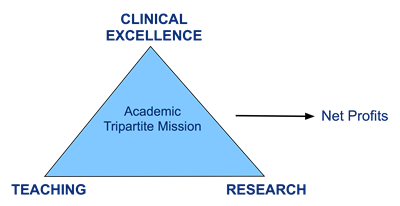Practice Finances
If you are like most physicians, you didn't learn how to handle the business aspects of your medical practice during your residency or fellowship training. The resources on this page can help fill in the gaps and ensure your practice is in good financial health.
Financial Management
A Step by Step Guide to Avoiding Practice Financial Audits (AAAAI Practice Management Workshop - reviewed 2025) 
Benchmarking Basics: Key Indicators for a Healthy Practice (AAAAI Practice Management Workshop - reviewed 2025) 
Practice Management Resource Guide Chapter 12: Using simple bookkeeping principles and reports to analyze allergy practice performance
Financial Independence and Early Retirement Strategies (2025 AAAAI Practice Management Workshop presentation) 
ACPonline.org: Financial Management Tools
Physician’s Practice: Finance (Resources)
Insurance Contracting/Negotiation
With increasing practice expenses and declining reimbursements, it’s imperative that your practice is getting the most out of its payer contracts. Monitor you contracts year to year and set goals for your negotiation. While reimbursement rates are essential, contract language can be just as important. Remember that negotiation is a process, not an event, and your first plan generally won’t survive the first round. Be prepared to adapt, adjust, and overcome. Knowledge, analysis and planning are essential for successful negotiation. Here are some concrete steps you can take to strengthen your negotiating position:
Know Your Contracts
• Create a summary form that includes the fee schedule, effective dates, contract point outliers, etc., for each payer.
• Create a master fee schedule of each payer’s reimbursement level.
• Know your payer mix. How hard do you want to negotiate with a company that is responsible for only 6% of your payments?
Be Prepared With the Data
• Analyze the top 25 CPT codes used in your office with a cross section of reimbursement rates by each payer.
• Have utilization, review, and expense data for the practice at your fingertips.
• Calculate the break-even point for your practice ahead of time.
• Gather patient quality data and make the case for your practice. What needs are you meeting/what treatments are you offering that others in the marketplace are not?
• Calculate the denial rate of each payer and their top three reasons for denial. Estimate the dollar value and add it to the negotiation.
Negotiate Like a Pro
• Plan negotiations 90 to 120 days prior to the renewal of the contract.
• Meet your representative face-to-face if possible and present your request for changes.
• Set a bargaining range with a target goal and your walk away point.
• Other than fees, look for other items that can be negotiated, such as the allowable time frame to appeal a denied claim or submit a claim.
ACP Guide to Dealing with Commercial Insurances
Negotiating Managed Care Contracts: Secrets from a Former Managed Care Executive (2024 AAAAI Practice Management Workshop) 
Academic Practice Management
Mission
Allergy/immunology divisions at large academic centers and private practices operate on a wide spectrum of various goals and missions, but both must maintain profitability to function. A/I divisions at academic, not-for-profit centers are driven by a tripartite mission. Yet like small private practices, the net profit and loss balance needs to be positive to offset the costs associated with teaching and research.

Profitability
Academic institutions measure individual faculty work effort and departmental profitability via a series of specific metrics. Clinical metrics include work relative value units (RVUs), payer mix, and the number of clinical sessions and/or call service attended. Teaching effort, grant funding, entrepreneurial revenue, university funds flow and philanthropic endowments are additional essential components of the overall revenue stream.
The percentage of revenue derived from each productivity stream depends on the individual faculty appointment track and the collective goals of the department. Expectations for each faculty appointment track depends on individual contractual arrangements determined on an annual basis. For example, a research faculty member typically derives 50% or more of their revenue from grant funding either through National Institutes of Health (NIH) contributions, foundation awards, or pharmaceutical sources.

Academic Balancing Act
University teaching hospitals rest at the center of an ongoing, complicated and evolving healthcare nexus. Various missions and profitability expectations must be carefully balanced for academic institutions to stay open and remain relevant into the next century. Advanced precision medicine, research opportunities, and telemedicine are but a few opportunities to counter balance negative forces associated with inefficient and cumbersome electronic medical record (EMR) systems and burdensome regulatory restrictions.

Additional Resources for Academic Practice
Fee Schedules and RVUs
Medicare fee schedule and RVU search (CMS)
Understanding Employed Physician Metrics  (2023 AAAAI Practice Management Workshop)
(2023 AAAAI Practice Management Workshop)
Funding
• Campbell EG. The future of research funding in academic medicine. N Engl J Med. 2009;Apr 9;360(15):1482-3
• Lo, B. Serving two masters – conflicts of interest in academic medicine. N Engl J Med. 2010;Feb 25;362(8):669-71
• Basics for the Academic and Employed Physician
Buying, Selling, or Closing a practice
Buying or Buying into a Practice: What is an A/I Practice Worth? 
Physician Retirement 101 (2023 AAAAI Practice Management Workshop) 
Practice Changes: Buying, Selling, Moving (2022 AAAAI Practice Management Workshop) 
Listen to the recording here. 
Items which appear next to a  symbol are for AAAAI members only.
symbol are for AAAAI members only.
These links are for research only. They are not endorsed by The American Academy of Allergy, Asthma & Immunology (AAAAI).
10/14/2025